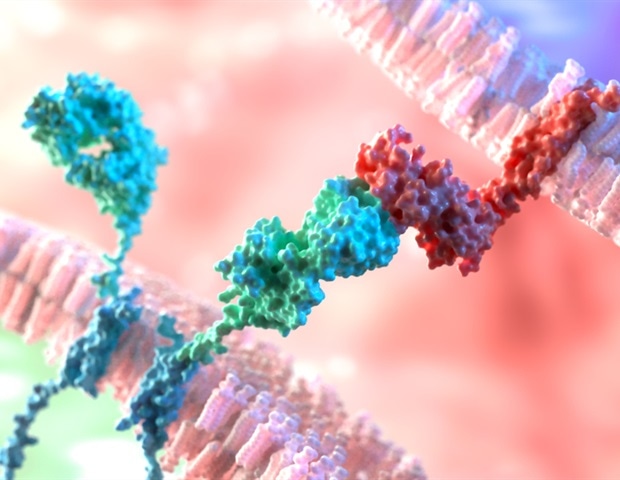What if a metal that’s already used to repair broken bones, straighten teeth and keep arteries from clogging could also be used to stop your cancer from spreading?
New findings published Dec. 9 in Nature Biomedical Engineering from scientists at Fred Hutchinson Cancer Research Center show for the first time that a piece of small, thin metal mesh loaded with cancer-fighting immune cells shrinks tumors in preclinical models of ovarian cancer.
Cell therapies to fight cancer have had great success in blood cancers but haven’t worked well with solid tumors. Our findings take a significant step toward making cell therapies effective against solid tumors by showing that a thin metal mesh loaded with T cells engineered to fight ovarian cancer cleared tumors in 70% of the treated mice.
Lead author Dr. Matthias Stephan, a faculty member in the Fred Hutch Clinical Research Division
Solid tumors, including cancers of the breast, ovary and pancreas, have a variety of tactics to hide from and fight back against cancer-killing immune cells like CAR (chimeric antigen receptor) T cells. Simply injecting anti-cancer cells has not worked; they don’t reach the tumor or if they do reach the cancerous cells, they tire out in trying to kill them and are then shed from the body.
Stephan designs materials that are safe in the body and can carry cancer-fighting cells to tumors. “In addition to minimizing side effects in patients, our ultimate goal is to make T-cell therapies faster and cheaper to make, and easier to deliver to patients.” he said.
In a step toward that goal, Stephan’s latest study loaded CAR T cells targeting ovarian cancer onto a porous, mesh-like metal film and then placed the film on tumors.
“This is not just a passive delivery device,” Stephan said. “It’s a release platform that triggers an expansion of CAR T cells that can overcome defenses that tumors make against the immune cells.”
The researchers used thin, nearly translucent metal films made by Monarch Biosciences (MonarchBio), which helped fund the project. The films are 10 micrometers thick, which is 1 millionth of a meter, or about seven times thinner than the average width of a human hair. Made of nickel titanium, the film can safely be implanted within the body and is used in other medical devices.
Viewed under a powerful microscope, the film has minuscule spaces that can be configured into different patterns. The spaces can be filled with drugs or other liquids and then implanted in the body, where the liquids ooze out and find their targets.
Stephan and his colleagues wanted to see if the films could hold T cells and deliver the cancer-fighting cells to tumors.
“We needed to find a pattern of the film that would work well for T cells,” Stephan said. “The pattern needed to be small enough where the cells would not fall between the cracks and not too small so that the T cells would feel too cramped and wouldn’t be able to move.”
They found that a pattern with straight lines resembling a top-down view of a maze worked best with the T cells. They coated the metal film with a combination of materials that allow the CAR T cells to grow and expand once they’re in the body.
The Fred Hutch team loaded the film with CAR T cells programmed to seek out a marker for ovarian cancer cells, called ROR1. The engineered cells were placed on both sides of the film and were then absorbed into the middle of the material.
“It’s like a piece of bread spread with marmalade on both sides,” Stephan said. “The metal film is the bread, and then we put CAR T cells on both sides of it and then they soak into the middle too.”
Using lab models of ovarian cancer, the researchers implanted films loaded with CAR T cells on the tumors. The T cells moved out of the film and gravitated near the tumor. Within 10 days, the tumors disappeared in all mice. Within 20 days, 70% of the mice remained tumor-free.
The approach — if confirmed by more studies and clinical trials — could eventually be used to treat diseases such as pancreatic and ovarian cancer, where tumor growth could be kept in check by implanting the film over it.
In another experiment reported in the same paper, the Fred Hutch researchers found that a tube-like version of the film soaked with CAR T cells kept tumors from growing into the tube. This approach could be used in cancers that cause obstruction of the airways or the digestive system, such as lung cancer or pancreatic cancer, or esophageal cancer, where stents are used to restrain tumors from interfering with swallowing.
“We focused on CAR T cells in the current experiment, but I could see this approach working with T cell receptor therapies, natural killer cells and other types of immune cells that target cancer,” Stephan said.
This article was published by News Medical.


